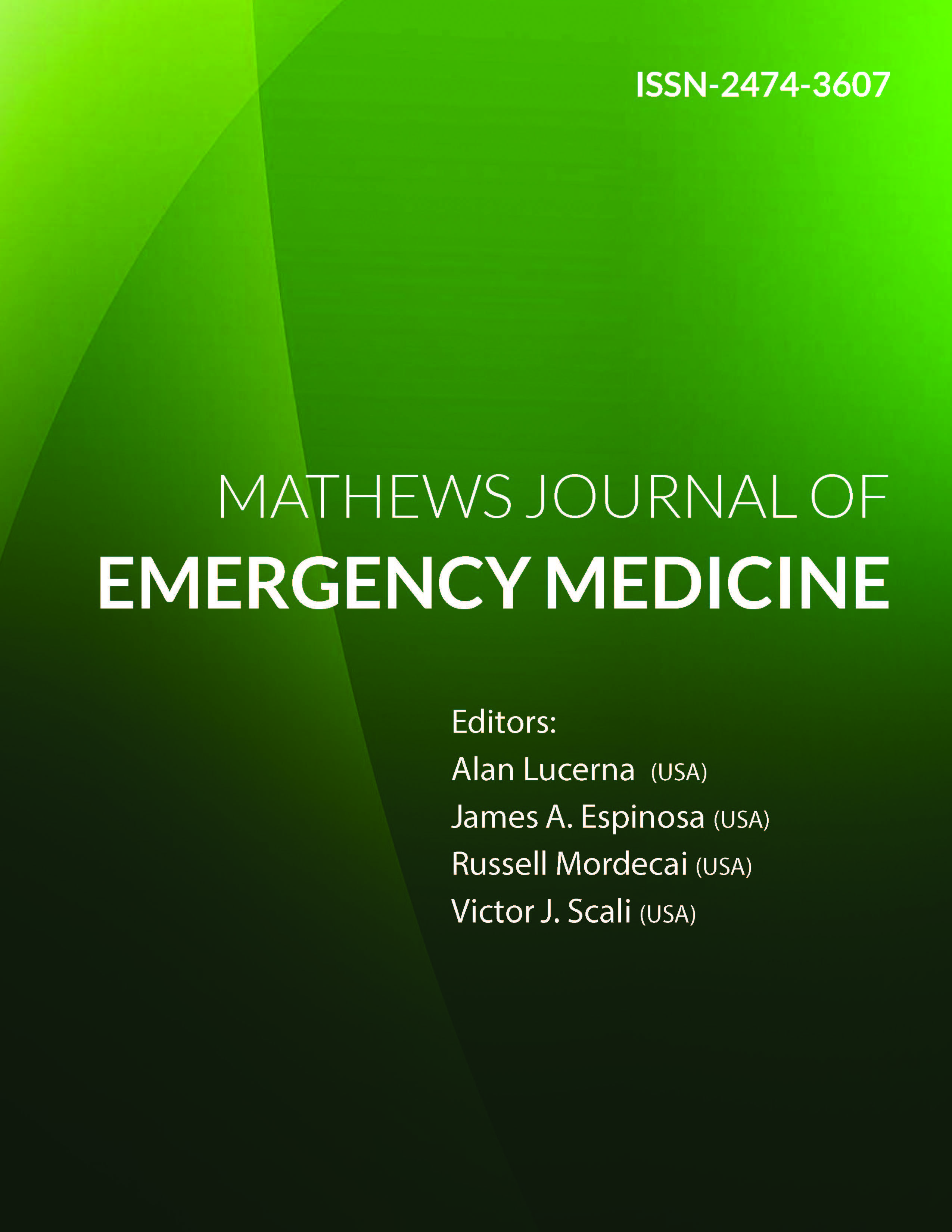
Information Links
Previous Issues Volume 7, Issue 2 - 2022
Role of Wide Awake Local Anaesthesia in Soft Tissue Injury of Hand
Shivam Patel1,*, Mohammed Tahir Ansari2, Roshan Mathew3, Praveen Aggarwal4, Murmu LR5, Sanjeev Bhoi6, Reena Patel7
1Assistant Professor, Department of Emergency Medicine (AIIMS, Raipur), India
2Associate Professor, Department of Orthopedics, All India Institute of Medical Sciences (AIIMS), New Delhi, India
3Senior Resident, Department of Emergency Medicine (AIIMS, New Delhi), India
4Professor and Head, Department of Emergency Medicine (AIIMS, New Delhi), India
5Professor (Surgery), Department of Emergency Medicine (AIIMS, New Delhi), India
6Professor (Medicine), Department of Emergency Medicine (AIIMS, New Delhi), India
7Department of Transfusion Medicine , AIIMS Raipur, India
Received Date: October 14, 2022
Published Date: October 31, 2022
*Corresponding Author: Shivam Patel, Assistant Professor, Department of Emergency Medicine (AIIMS, Raipur), India. Phone: 09810697593; Email: [email protected]
Citation: Patel S, et al. (2022). Role of Wide Awake Local Anaesthesia in Soft Tissue Injury of Hand. Mathews J Emergency Med. 7(2):46.
Copyrights: Patel S, et al. © (2022).
ABSTRACT
Study hypothesis: We conducted a quasi-experimental study which includes the data from 79 patients enrolled from March 2015 to November 2016. Injury repair was done under WALA. Visual analogue pain scale was calculated before, during and after repair. Blood loss was measured during repair. Follow up was done to look for functional disability and complications following treatment. SD and mean were calculated for visual pain analogue scale. p-value was calculated to look for the significance of this study. Results: Of the 79 patients enrolled in the study 76 were presented with clean lacerated wound while 3 were having associated tendon injuries. The mean pain score on VAS before repair was 4.6, during repair were 2.23 and after repair was 1.44. The average blood loss during repair (mean + SD) came out to be 4.95 + 2.44, with only 4 patients having a loss of > 10 ml. There was significant decrease in VAS score (p value <0.001), patients were discharged within a short interval of repair and on follow-up none of the cases were having complications. Conclusion: In this study, we found that in hand repair done under WALA there is significant decrease in pain scale. Also amount of bleeding was minimum. WALA may be safely used in digital and peripheral sites as it has no complications with recommended dose. The use of WALA may simplify the way of treatment in repairing hand injuries and may have a role in early disposition of patients in the crowded emergency department.
Keywords: Hand injury, Emergency department, Adrenaline, Lidocaine, Visual analogue scale, Quick DASH score, Mayo wrist score